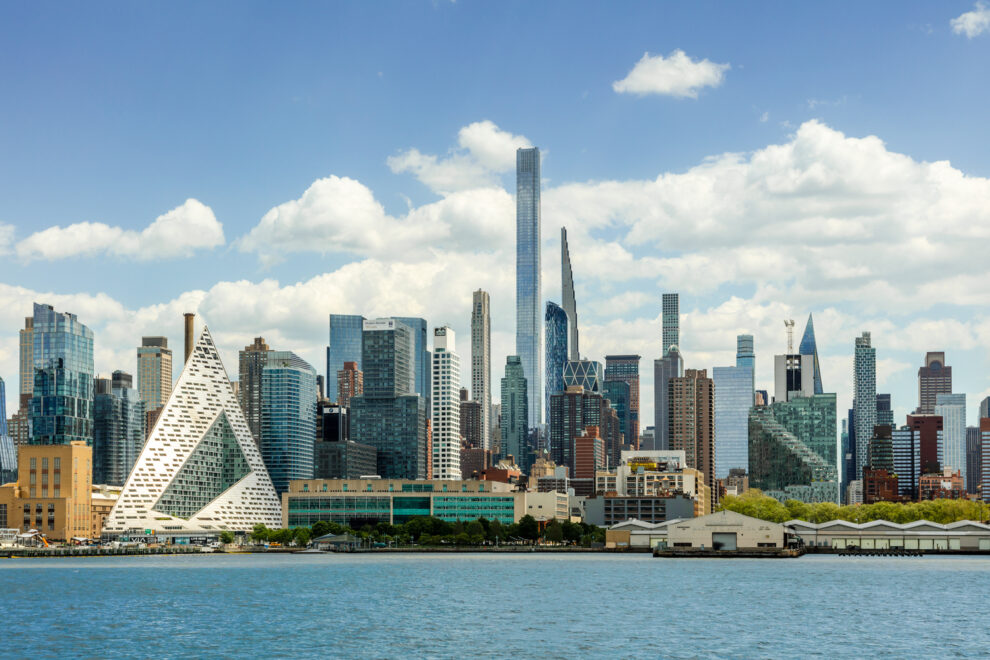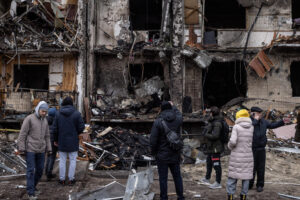Skyscrapers are iconic symbols of modern urbanization and technological advancements all over North America. In fact, these structures are a sign of economic prosperity, urban density, and the capabilities of humanity’s ambition. In major cities across the continent, they shape the skyline and give identity to these metropolises. Cities like New York City, Toronto, and Florida utilize these cutting-edge designs to showcase power beyond their physical stature.
In general, skyscrapers are characterized by their remarkable height and pioneering engineering capabilities. They use advanced materials such as steel, glass, and concrete and serve as multifunctional spaces, ranging from housing to hotels and offices. Architects all around the world continually push the boundaries of architectural creativity, design, sustainability, and functionality while crafting these buildings. The structures allow architects to maximize land use in new ways, tackling densely populated urban areas.
ODA / Mixed-Use Tower in South Florida
This 47-story tower is composed of 830 residential units and studios, along with ample commercial and amenity space measuring 13,000 square feet. The structure is located south of the New River in the Rio Vista neighborhood, aiming to bring life into the respective area. A large corner plaza is incorporated on the street level, making public functions available at the lower levels and creating public space for the surrounding neighborhood.
Álvaro Siza / Skyscraper in New York City, 611 West 56th Street
Designed by the Pritzker Prize winner, this New York skyscraper is 137 meters high, with 35 floors included. It is designed as a residential building in the famous Hell’s Kitchen neighborhood in Midtown. Moreover, the scheme has 77 residential units, ranging from one-bedroom to four-bedroom apartments, as well as full-floor apartments and penthouses. The limestone cladding is seamlessly joined with horizontal windows that overlook the entire neighborhood.
BIG / Spiral Skyscraper in New York City
Designed by Bjarke Ingels Group, the new Spiral Skyscraper in Hudson Yards, New York City, rises 66 stories. The structure is over 1,000 feet tall and incorporates a series of stepped and landscape terraces that wrap the building on all sides. The tower is designed as an office space, with some retail and commercial space on the ground floor. Moreover, the Spiral Skyscraper incorporates outdoor space available to the tenants through a series of connected atriums.
Herzog & de Meuron / Toronto Tower
This 1,063-foot tall skyscraper in Toronto is designed to become Canada’s tallest residential building. The tower also sets aside 16 floors out of the 64 for offices and retail space, with a sky lounge and a restaurant at the top, overlooking the urban fabric. Located in the Yorkville neighborhood, the building will maximize usable floor areas to capitalize on eastern views of the city.
Arquitectónica / Florida Commercial Building
One Brickell City Center is a 1,000-foot tower planned to become the tallest commercial tower in Florida. The structure is located in Miami’s financial district and is designed to become an office building in a mixed-use development initiative. The design places emphasis on Miami as the emerging global hub for commerce, finance, and technology. Accommodating 1.5 million square feet of office space and amenities, the project aims to create open views towards the ocean and Downtown Miami.
In conclusion, skyscrapers in North America can be seen as symbols of progress and innovation. The architectural structures are an embodiment of our modern civilizations. The skylines of New York, Toronto, and South Florida are being redefined, and the structures are shaping the future of these respective cities. Each architect designs towers with different constraints, considering the use of materials for different functions and integrating the structure into the existing urban fabric.
The five skyscrapers highlighted above represent the ongoing evolution of architecture in North America. From residential projects like Álvaro Siza’s tower in New York City to the novel Spiral concept in Hudson Yards by BIG, each structure represents the current needs of its occupants. However, designing these structures during an economic boom can be challenging, causing huge shadows and micro-climates in an already cold region. Furthermore, these towers can contribute to gentrification, driving up property values and displacing lower-income residents.
Source: ARCH DAILY











